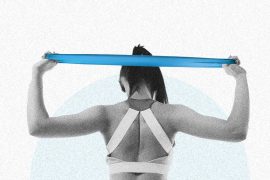In recent years, concerns about the detrimental effects of extended sitting on office workers have prompted alarming headlines, even suggesting that regular exercise may not entirely offset the damage. However, a study published in the British Journal of Sports Medicine provides a ray of hope, revealing that just 22-minute daily exercise of moderate to vigorous activity daily can counteract the negative consequences of prolonged sitting. Furthermore, the research indicates a decrease in the risk of premature death across all causes as an individual’s activity level increases. This study underscores the potential for relatively short bouts of physical activity to mitigate the adverse impact of sedentary lifestyles, offering valuable insights for those facing extended periods of sitting in their daily routines.
The research:
The research suggests that the current recommendation of 150 minutes per week of moderate to vigorous activity is sufficient to offset the detrimental health effects of prolonged sitting. As explained by the lead researcher, engaging in activities that make individuals breathe a bit harder, such as brisk walking, gardening, or tackling a hill, can be effective in counteracting the risks associated with extended sitting. The study aimed to explore the relationship between physical activity, sedentary time, and mortality risk.
The findings indicate that even a modest increase in physical activity is associated with a decline in the risk of death. For those sitting less than 10½ hours daily, an extra 10 minutes of activity correlated with a 15% lower death risk, while individuals exceeding 10½ hours of daily sitting experienced a more substantial 35% risk reduction with the same increase in activity. This highlights the significant impact of incorporating moderate to vigorous activity into daily routines for overall health and mortality risk mitigation.
Prolonged sitting associated with risk of death:
Prolonged sitting is associated with a high risk of death due to its connection to various adverse health outcomes, including obesity, cardiovascular disease, type 2 diabetes, and certain types of cancer. When individuals sit for extended periods, their muscles remain inactive, leading to decreased metabolism, poor blood circulation, and increased inflammation. These factors collectively contribute to higher mortality rates.
Exercise, particularly activities like brisk walking, jogging, cycling, or strength training, plays a crucial role in mitigating the risk of death associated with prolonged sitting. Regular physical activity helps counteract the negative effects of extended periods of inactivity by promoting better metabolism, circulation, and overall health, thus contributing to increased longevity.
22-minute daily exercise:
A comprehensive 22-minute daily exercise routine can incorporate various exercises to address cardiovascular health and strength training. Consider the following components:
- Brisk Walking (12 minutes): Begin with a brisk walking session for at least 12 minutes. This aerobic exercise is excellent for cardiovascular health and can help reduce the risk of cardiovascular diseases (CVD). It’s a simple yet effective way to elevate your heart rate and promote overall fitness.
- Strength Training (10 minutes, twice a week): Include strength training exercises at least twice a week. Focus on different muscle groups during each session. Incorporate bodyweight exercises like squats, lunges, push-ups, and planks. Strength training is crucial for maintaining lean muscle mass, especially as the body tends to lose muscle after the age of 30. This helps prevent the loss of muscle mass, which becomes more pronounced with age.
Maintaining a consistent workout routine, combining cardiovascular exercise with strength training, contributes not only to heart health but also to overall well-being. As emphasized, these exercises become increasingly important after the age of 30 to counteract the natural decline in muscle mass. Prioritizing regular physical activity is essential for preventing health issues and ensuring a healthier and more active lifestyle.
Disclaimer:
The information contained in this article is for educational and informational purposes only and is not intended as a health advice. We would ask you to consult a qualified professional or medical expert to gain additional knowledge before you choose to consume any product or perform any exercise.






